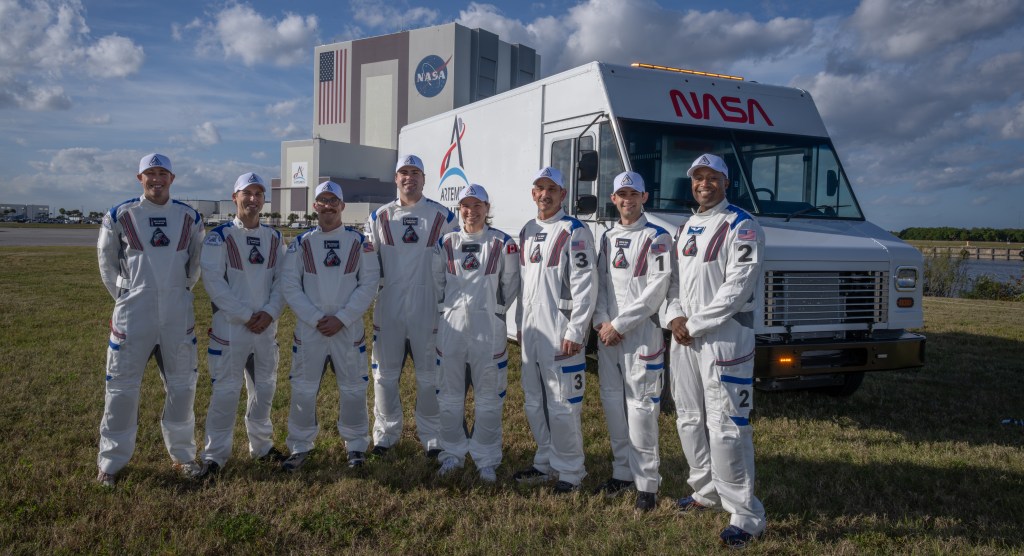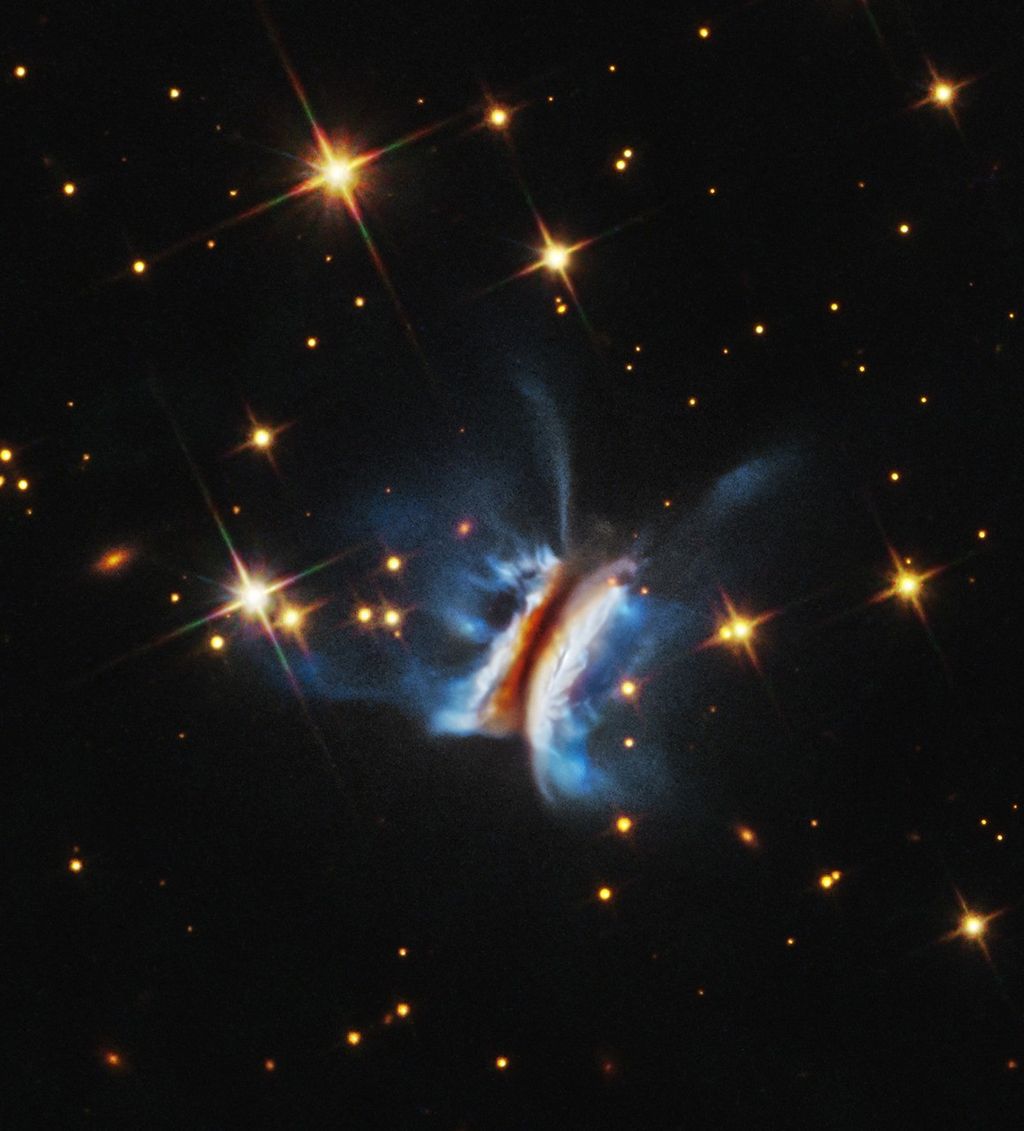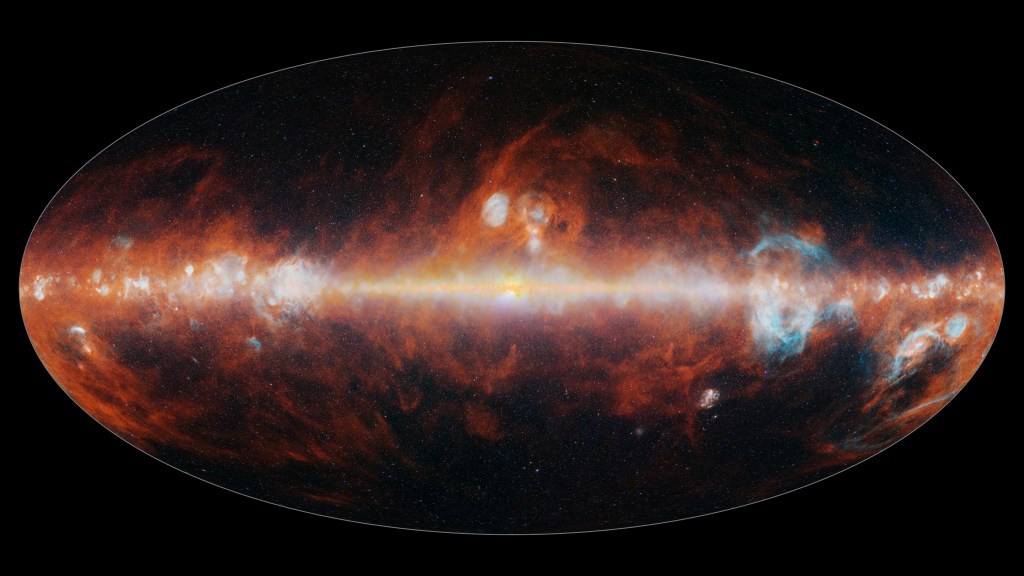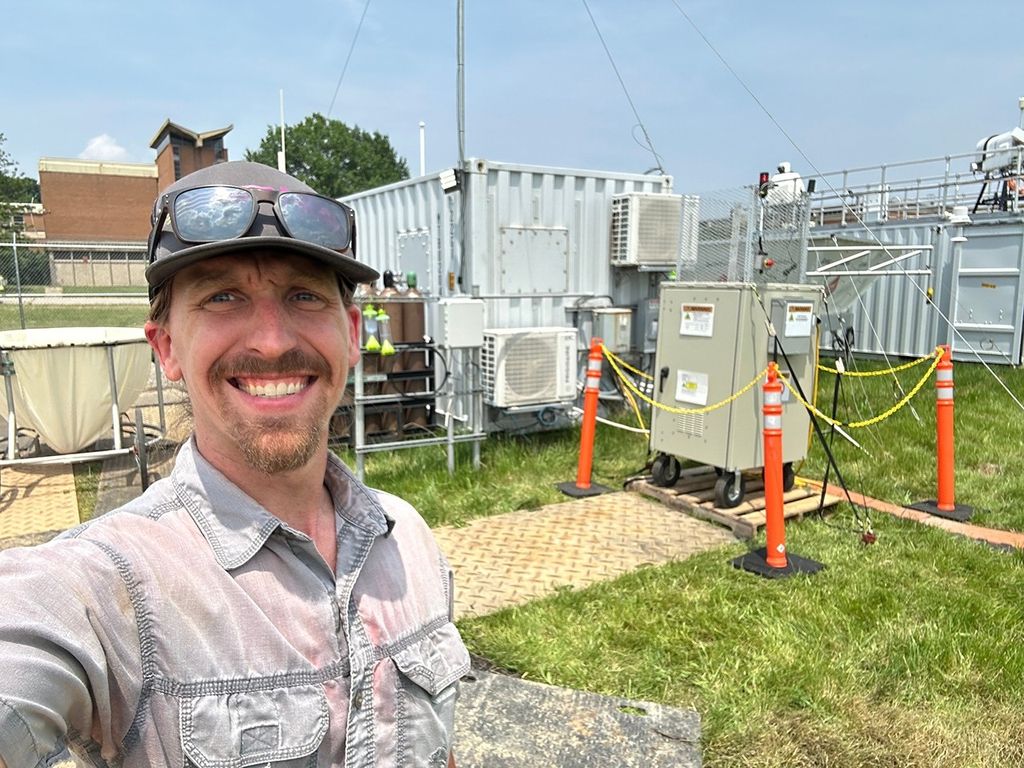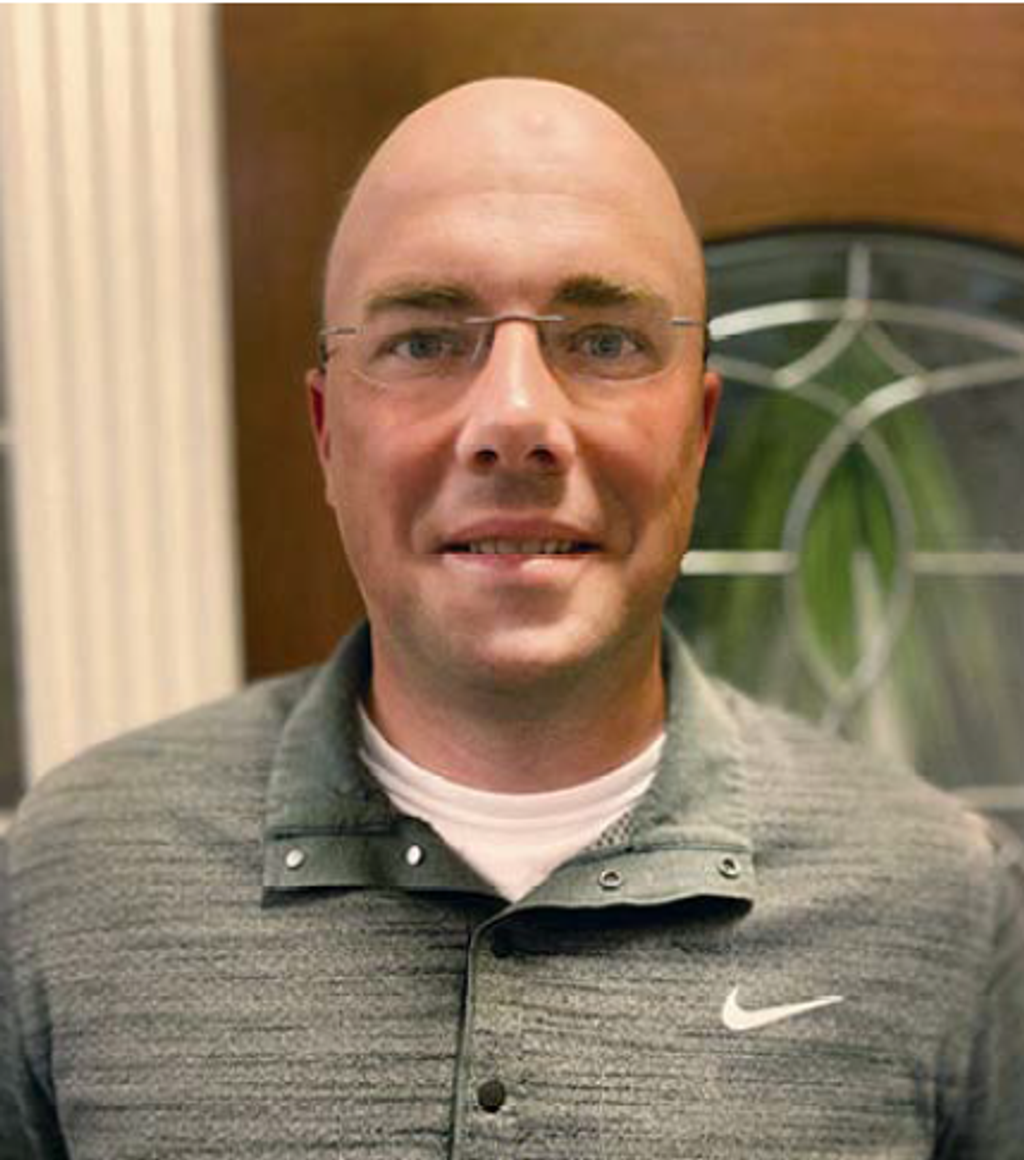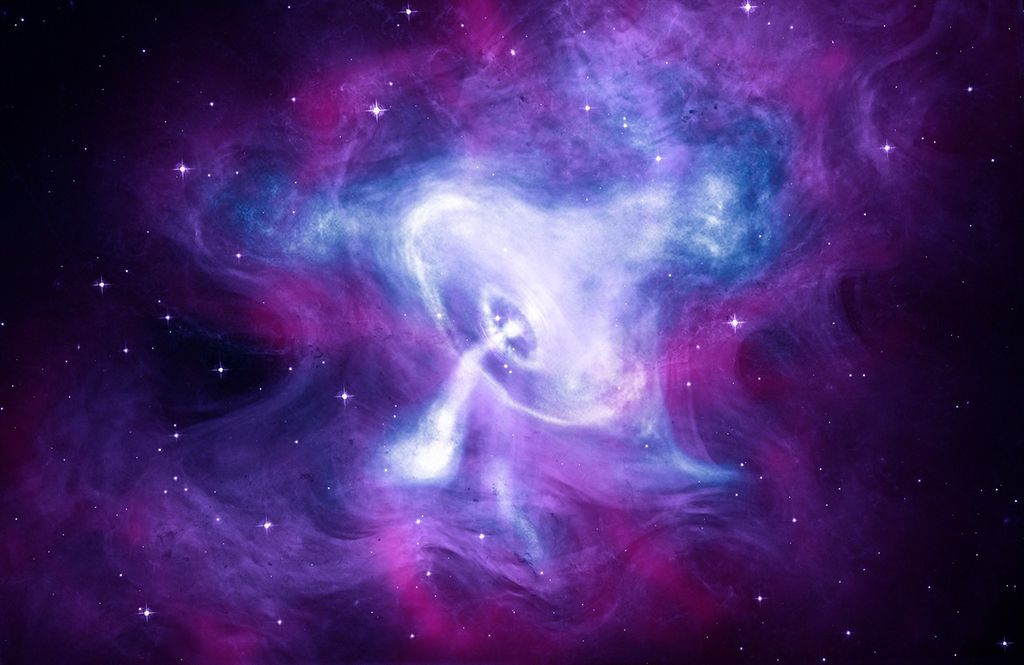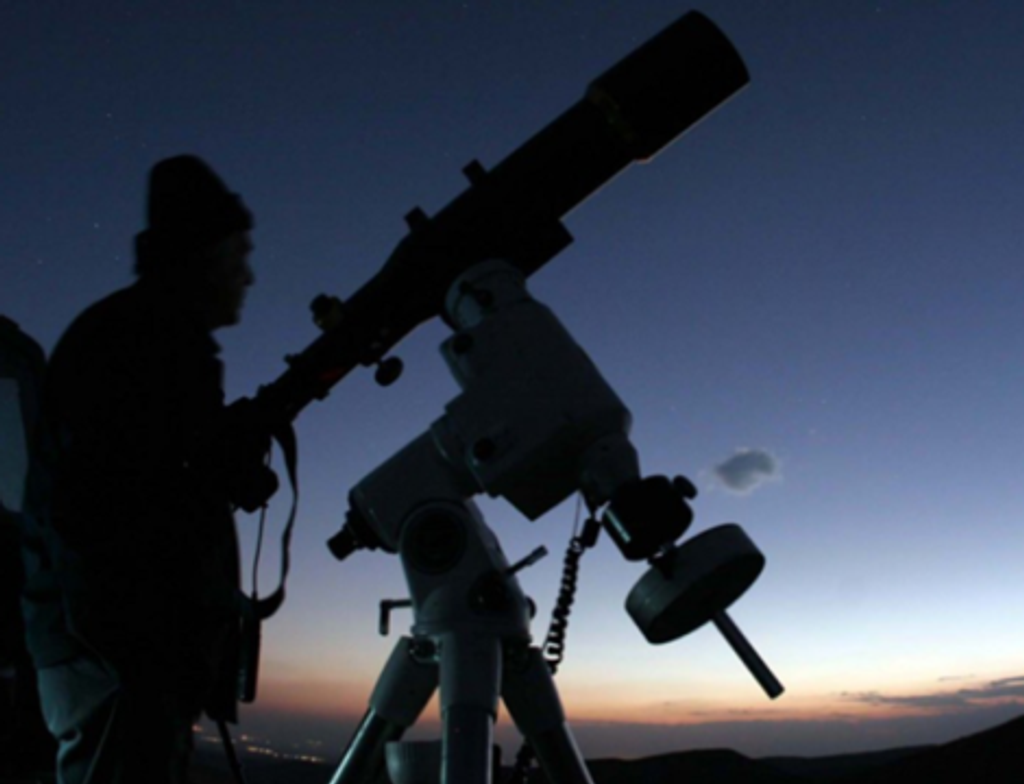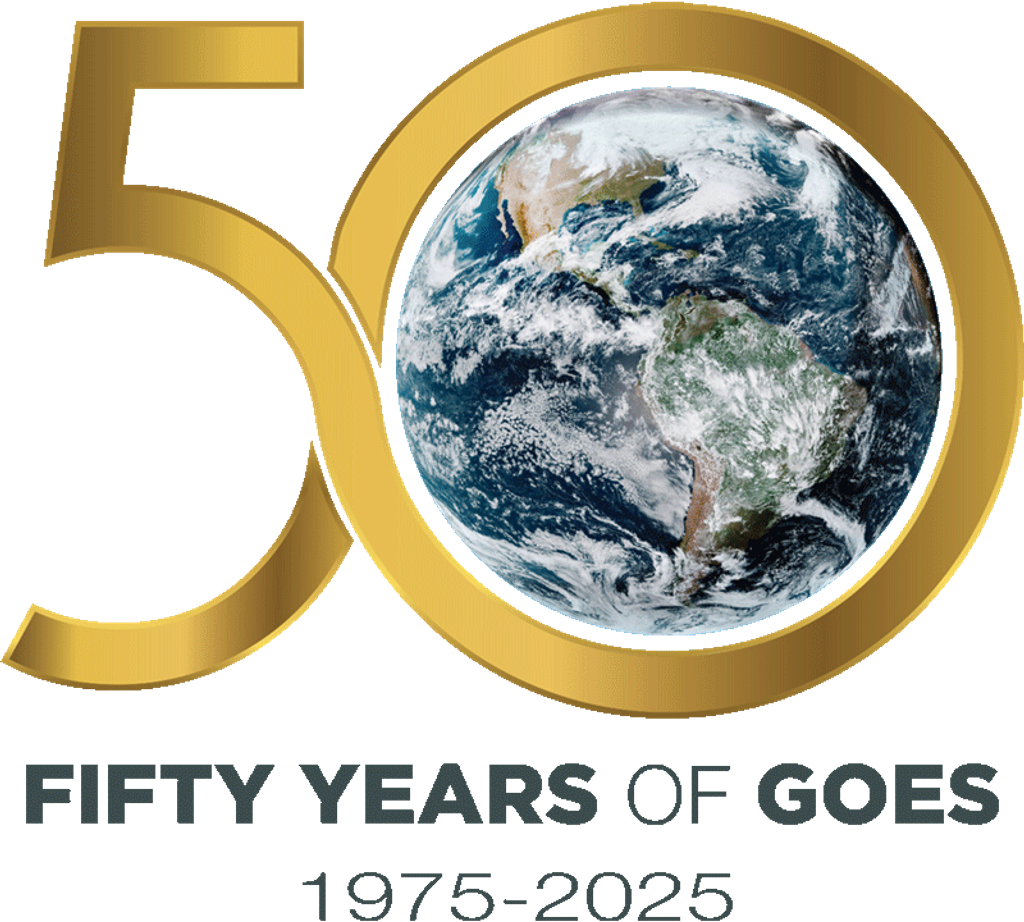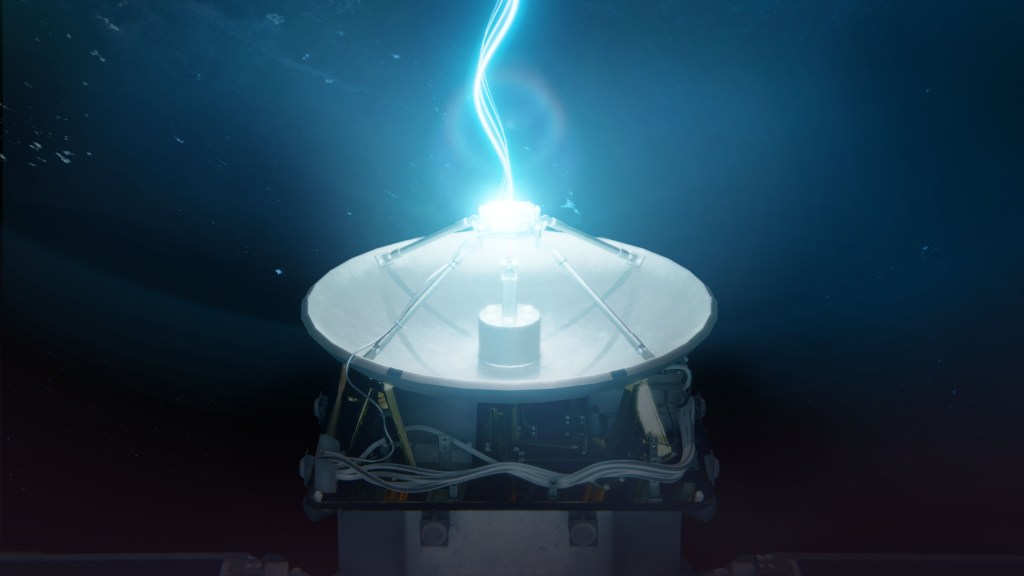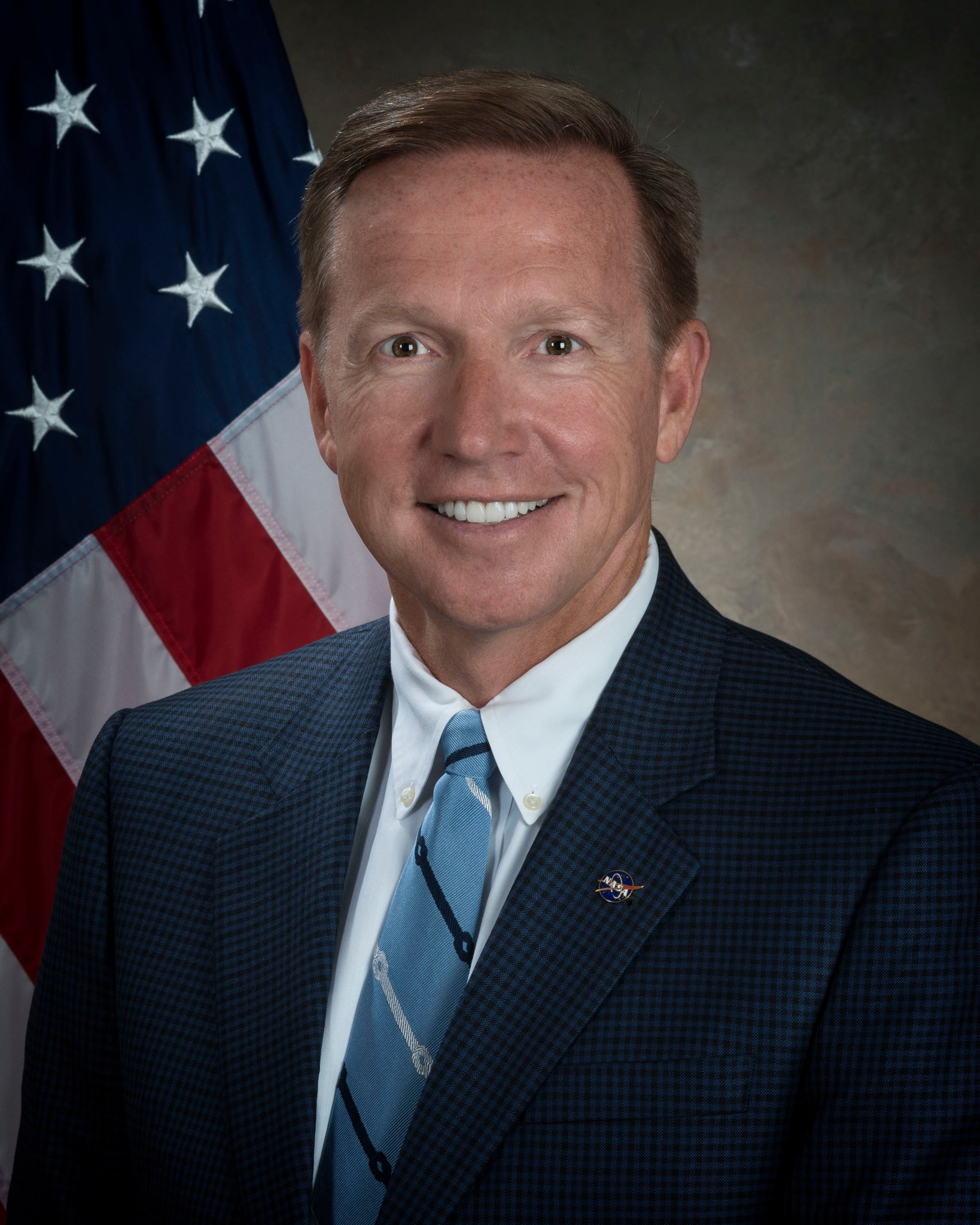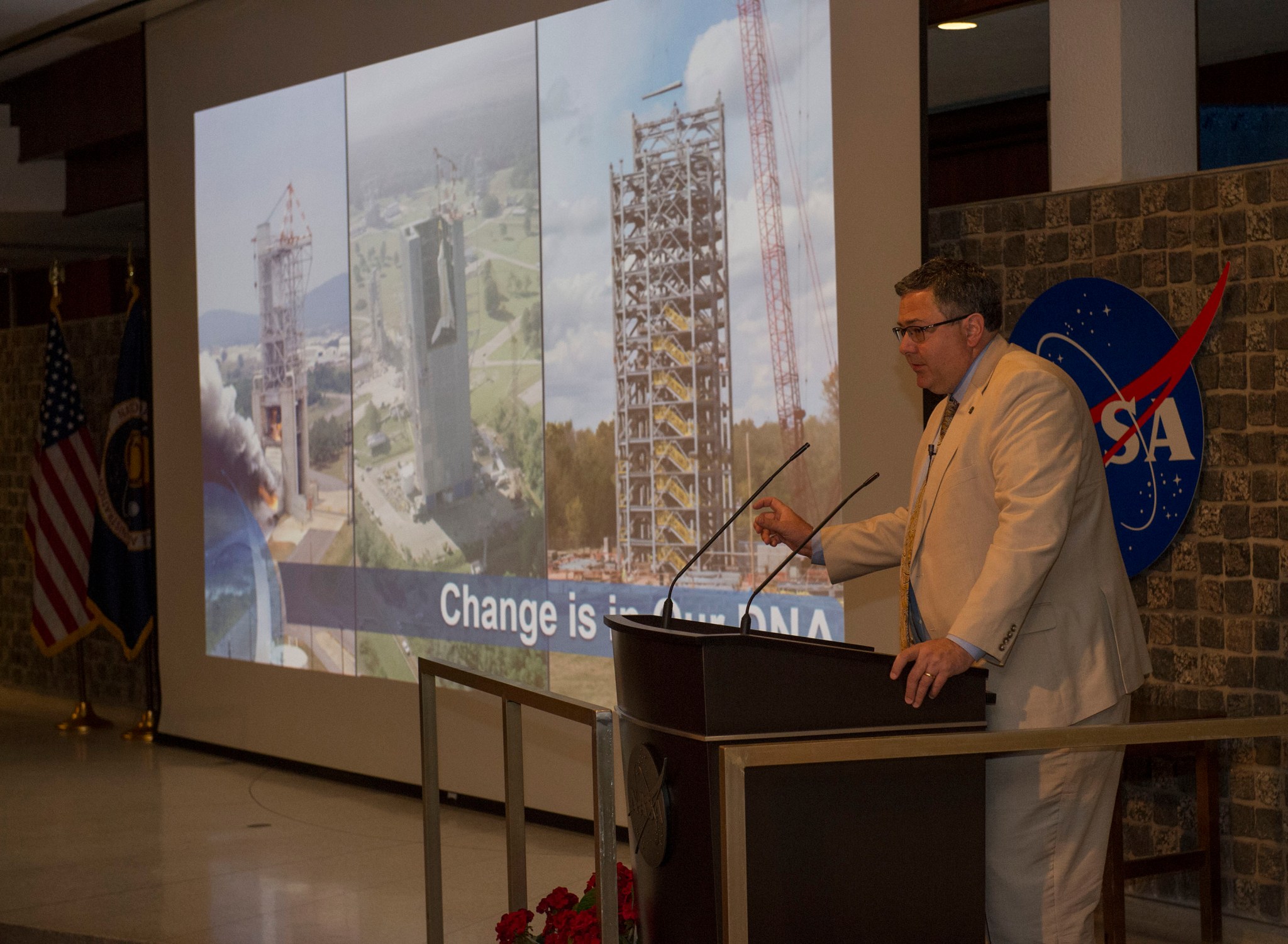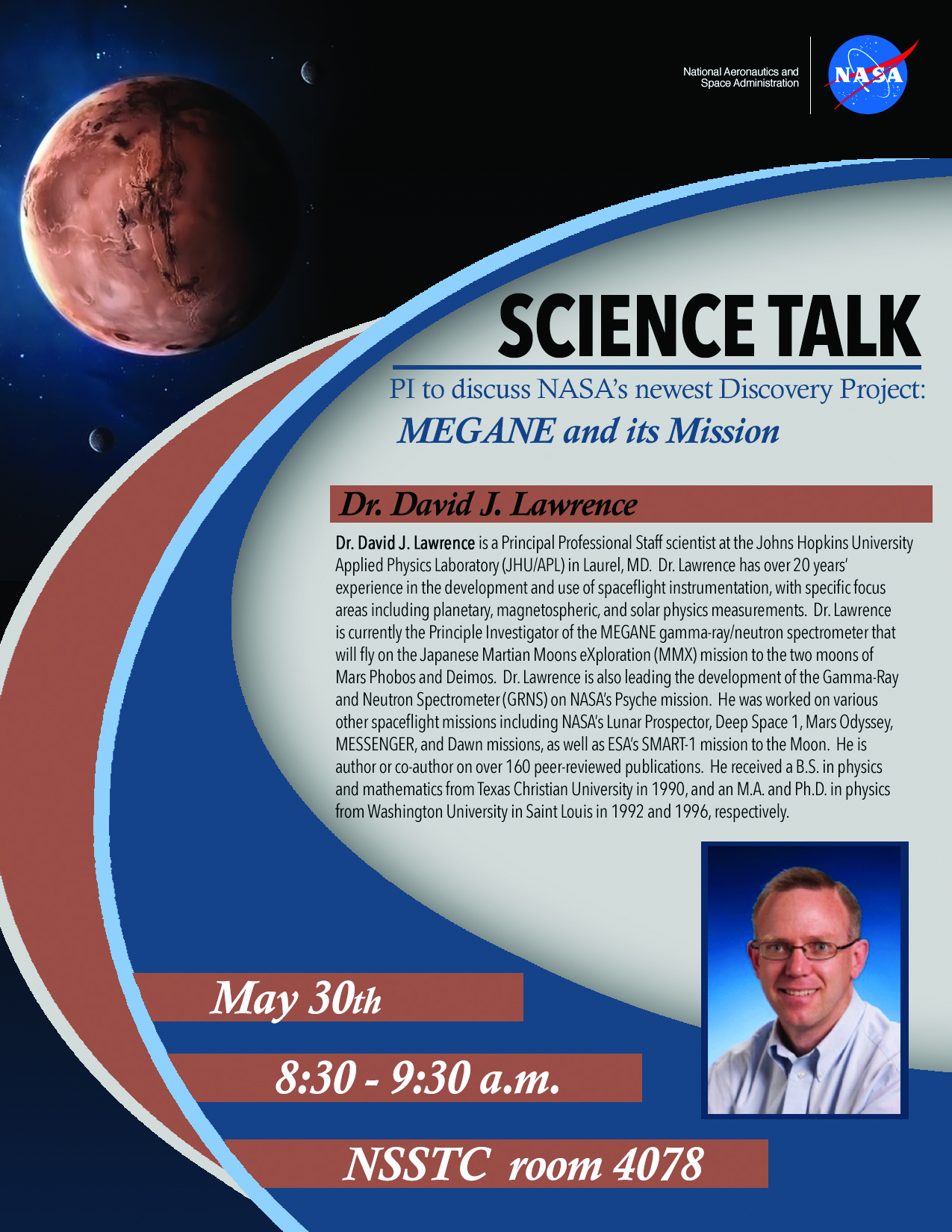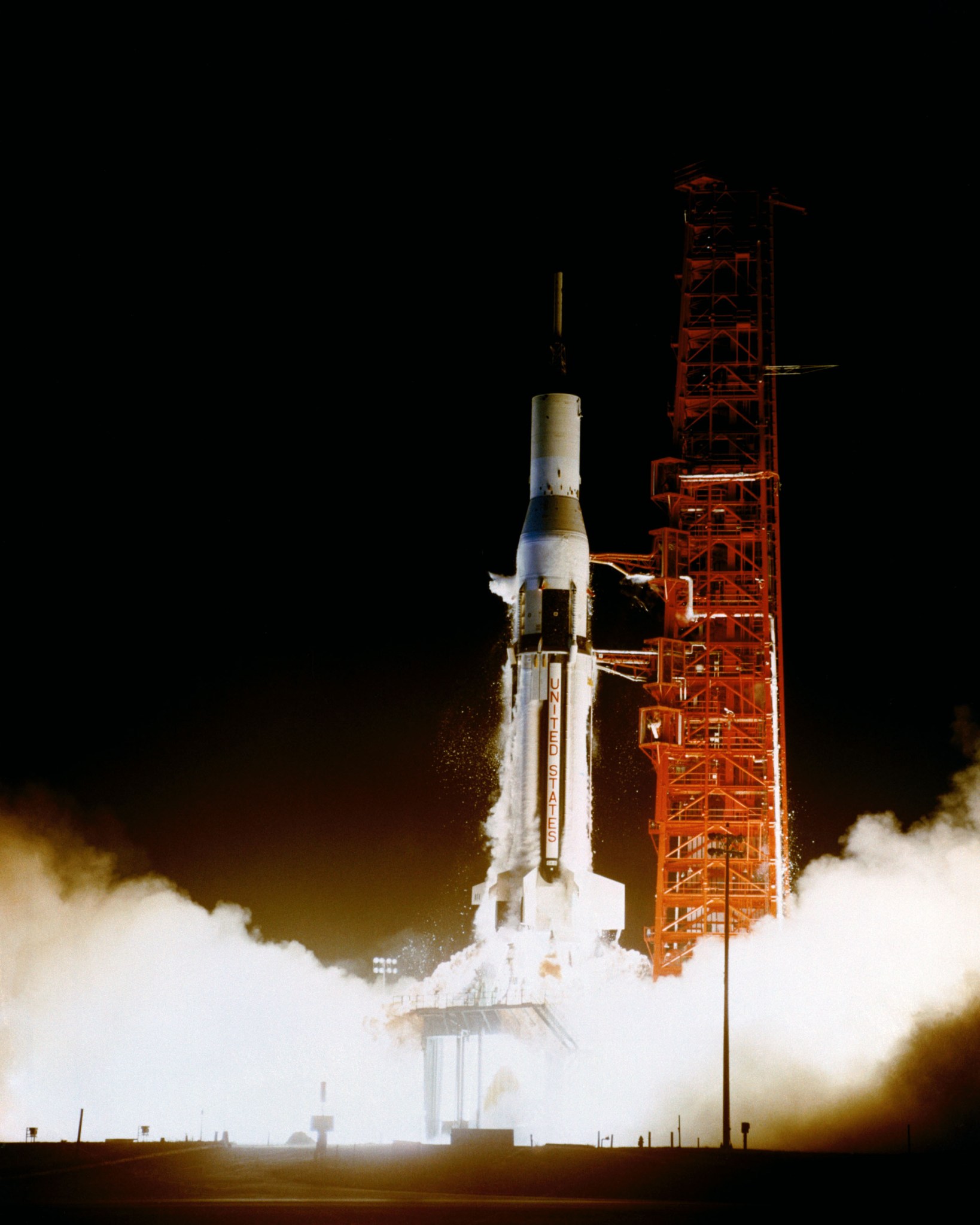In This Week’s Star
- Steve Miley Named Marshall Associate Director
- New NASA Administrator Holds First Agency Town Hall; Marshall Center Director Updates Workforce at All-Hands
- The Bright Before the Dawn: Orbital ATK Launches Supplies to ISS
- David Lawrence to Discuss Mars Moons Exploration Mission at NSSTC
- Veteran Astronauts Complete Fifth Spacewalk of 2018
- Middle School Students from Tennessee to Launch CubeSat Into Space
- Marshall Shows Off New Testing Facility for the International Space Station
- Marshall Shared Experiences Forum Features Glenn’s Anita Laing
- This Week in NASA History: The Saturn I SA-8 Mission Launches with Pegasus 2 – May 25, 1965
- Obituaries
Steve Miley Named Marshall Associate Director
Steve Miley has been named associate director of NASA’s Marshall Space Flight Center.
Marshall, one of NASA’s largest field installations, has almost 6,000 civil service and contract personnel, an annual budget of approximately $2.5 billion, 4.5 million square feet of infrastructure and a broad spectrum of human spaceflight, science and technology development.
“With three decades of government acquisition and management experience, Steve is well prepared for his new position on the center’s senior leadership team,” said Marshall Center Director Todd May. “The leadership skills he has displayed while working with NASA Headquarters, other NASA field centers, the U.S. Air Force, government agencies and partners has been, and will continue to be, invaluable to Marshall and the nation’s space exploration efforts.”
As associate director, Miley will manage and lead development of business operations, guide daily business decisions and oversee Marshall’s operational policy and processes. In addition, he will serve as a senior adviser in advancing the direction of the center’s future.
The Dayton, Ohio, native most recently served as director of Marshall’s Office of Procurement. Named to the position in December 2015, he managed the organization responsible for all aspects of the contracting and procurement processes at Marshall, NASA’s Michoud Assembly Facility and associated contractor facilities.
In 2014, Miley began a second stint as the associate director for operations in Marshall’s Engineering Directorate. He also held that post from 2007 to 2011. From 2011 to 2014, he was at Wright-Patterson Air Force Base near Dayton, Ohio, as director of contracting for the U.S. Air Force Life Cycle Management Center, the organization responsible for total lifecycle management of Air Force weapon systems. He led 13 acquisition directorates at three military sites, overseeing more than 2,000 contracting professionals, and guided more than $31 billion in annual obligations for 10 program offices with an active contract value of more than $196 billion.
In 2006, Miley was appointed to the Senior Executive Service at NASA Headquarters, where he supervised the agency’s key technical capability portfolios as director of the Strategic Capabilities Assets Division. The Senior Executive Service is the personnel system that covers most of the top managerial, supervisory and policy positions in the executive branch of the federal government.
Miley began his career in 1988 as a contract negotiator at Wright-Patterson Air Force Base, supporting key military aviation and missile programs. After graduating from the Air Force contracting intern program in 1992, he transferred to NASA Headquarters as a contracting officer and procurement analyst. He was a contract negotiator for the NASA-Russian Space Agency contract for American support and use of Space Station Mir. In 1995, he transferred to NASA’s Johnson Space Center as a contracting officer and business team leader in the International Space Station Program Office. He returned to NASA Headquarters from 1998 to 2007 to take on a variety of positions, including manager of the Sponsored Research Business Office and acting assistant associate administrator for infrastructure management in NASA’s Office of Space Flight.
He earned a master’s degree from the Southern Baptist Theological Seminary in Louisville, Kentucky, in 1986, a master’s degree in business administration from Wright State University in Dayton, Ohio, in 1992, and a bachelor’s degree from Campbellsville University in Campbellsville, Kentucky, in 1983. He also received the Professional Designation in Contract Management from the Air Force Institute of Technology at Wright-Patterson Air Force Base, and the Certified Professional Contracts Manager designation from the National Contract Management Association, headquartered in Ashburn, Virginia, in 1992.
A 21-year Air Force reserve officer, Miley received his commission through the Air Force ROTC program at the University of Louisville in Louisville, Kentucky. He retired as a lieutenant colonel in 2008.
He and his wife Dana live in Huntsville.
New NASA Administrator Holds First Agency Town Hall; Marshall Center Director Updates Workforce at All-Hands
By Jonathan Deal
NASA team members across the United States got to know NASA Administrator Jim Bridenstine as he introduced himself and took questions from the workforce at the first agencywide town hall event, held May 17 at NASA Headquarters.
“There are amazing people all over this agency that I’m going to be relying on, and I am under no illusions that I have all the answers,” Bridenstine said. “But I’ll tell you this — the people that I’ve met at this agency are absolutely brilliant, they’re exceptionally diverse in their viewpoints and I can’t wait to continue learning more.”
Bridenstine became NASA’s 13th administrator when he was confirmed by the U.S. Senate and sworn in on April 23. During the town hall, Bridenstine talked about his military service, combat experience and congressional experience serving Oklahoma’s First Congressional District in the U.S. House of Representatives. Bridenstine told the workforce about his lifelong interest in flight and space and how he already thinks of NASA as his family.
“Three and a half weeks here, I am convinced that this is the greatest agency to work for,” he said. “I am absolutely convinced that every one of us in this room, and people who are watching on television, we all hit the jackpot when we got offered a job here. You’re the reason that this agency is perceived in that way.”
Immediately following the town hall event, NASA Marshall Space Flight Center Director Todd May held an all-hands meeting with Marshall team members to discuss progress, milestones and updates. He spoke about working with the new administrator and reviewed recent leadership changes around the center.
“Change is in our DNA, so even if the future brings change, we have a great team and organization in place to thrive despite it,” May said. “We enjoy broad support from the agency, to the White House, Congress and industry.”
May provided updates on the center’s crucial work for the International Space Station and NASA’s Space Launch System as Marshall team members prepare SLS for its first mission, Exploration Mission-1. He also congratulated the Marshall Discovery program team, that is helping to manage the InSight Mars Lander mission, which launched to the Red Planet on May 5.
“When we hit EM-1, the world is going to be watching,” May said. “When we hit EM-2, the world is going to stand still when will send humans to deep space from American soil. SLS and Orion are the backbone of that.”
Deal, an ASRC Federal/Analytical Services employee and Marshall Star Editor, supports the Office of Strategic Analysis & Communications.
The Bright Before the Dawn: Orbital ATK Launches Supplies to ISS
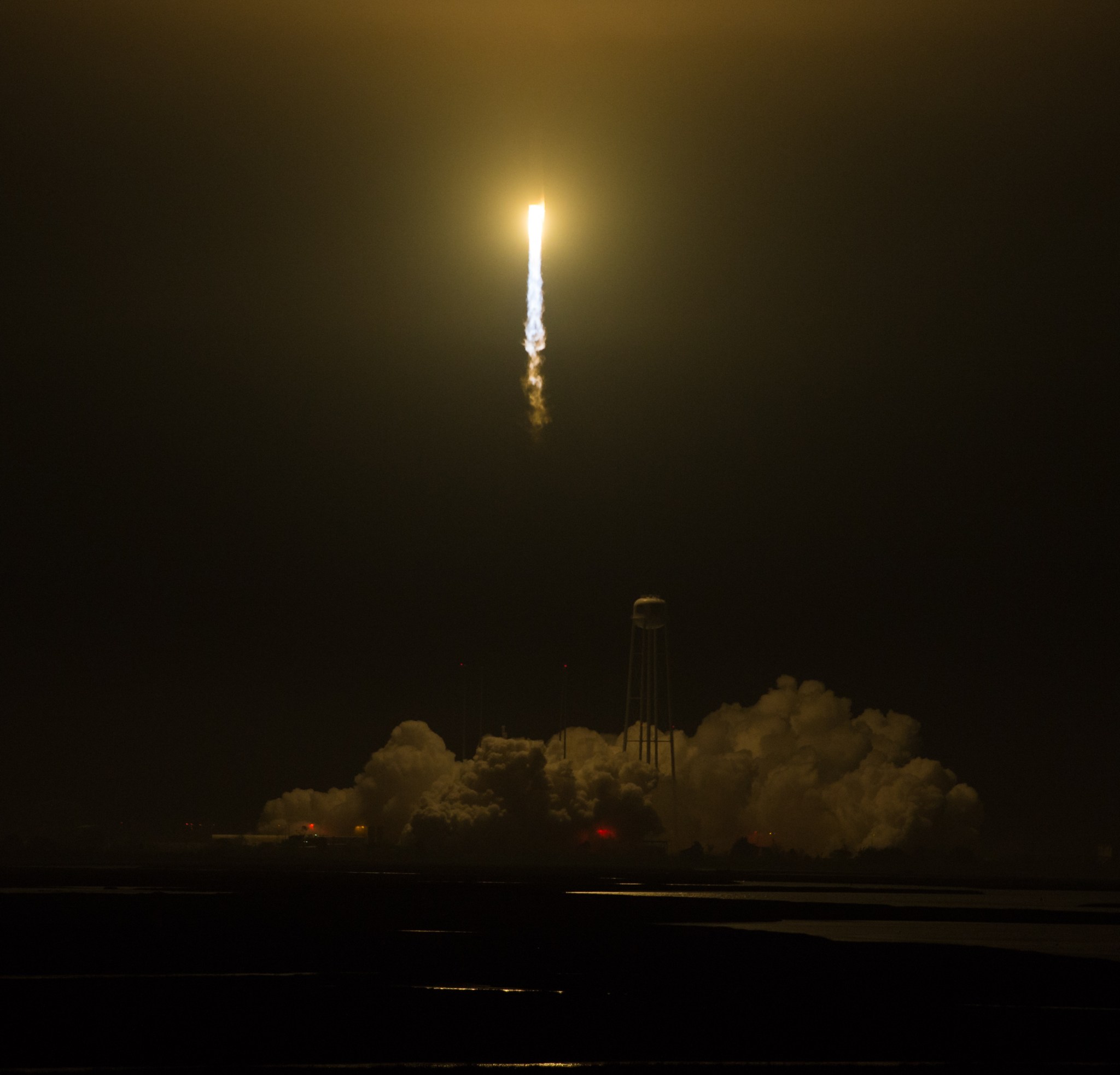
The final predawn moments of May 21 were a flurry of activity at NASA’s Wallops Flight Facility as Orbital ATK of Dulles, Virginia, launched the Cygnus resupply vehicle on an Antares rocket to the International Space Station. Named the S.S. J.R. Thompson, the Cygnus resupply vehicle is scheduled to dock with the station on May 24. Carrying over 7,000 pounds of supplies, experiments and hardware, it is named after the late James “J.R.” Thompson, who was director of NASA’s Marshall Space Flight Center from September 1986 to July 1989, and a distinguished leader in the aerospace industry. The spacecraft is transporting multiple experiments from Marshall, including the “NASA Sample Cartridge Assembly-Gravitational Effects on Distortion in Sintering” experiment. The study looks at understanding and quantifying the role gravity plays on sintering — the process of making metal parts from a powder without melting. Clear skies allowed watchers along the Eastern Seaboard to view the launch. (NASA/Aubrey Gemignani)
David Lawrence to Discuss Mars Moons Exploration Mission at NSSTC
David Lawrence, principal investigator of the MEGANE gamma-ray/neutron spectrometer, will discuss the instrument and the upcoming Japan-led Mars Moons eXploration Mission that the instrument will be a part of, better known as MMX, at the National Space Science and Technology Center at 8:30 a.m. May 30. The science talk, “MEGANE and its Mission,” will be held in room 4078 at the NSSTC.
MEGANE — Mars-moon Exploration with Gamma rays and Neutrons — is the science instrument NASA selected for the upcoming MMX mission, which will visit the two Martian moons, Phobos and Deimos. Lawrence is a principal professional staff scientist at the Johns Hopkins University Applied Physics Laboratory in Laurel, Maryland.
The instrument, a sophisticated neutron and gamma-ray spectrograph, will help scientists resolve one of the most enduring mysteries of the Red Planet — when and how the small moons formed. Scheduled to launch in 2024, the mission will land on the surface of Phobos, collect a surface sample and return to Earth in 2029.
MMX is in development by the Japan Aerospace Exploration Agency. NASA is supporting with the development of one of the spacecraft’s suite of seven science instruments. MEGANE will be developed under NASA’s Discovery Program, which provides frequent, low-cost access to space using principal investigator-led space science investigations relevant to SMD’s planetary science program. The Discovery Program is managed by NASA’s Marshall Space Flight Center for SMD, which conducts a wide variety of research and scientific exploration programs for Earth studies, space weather, the solar system and universe.
Veteran Astronauts Complete Fifth Spacewalk of 2018
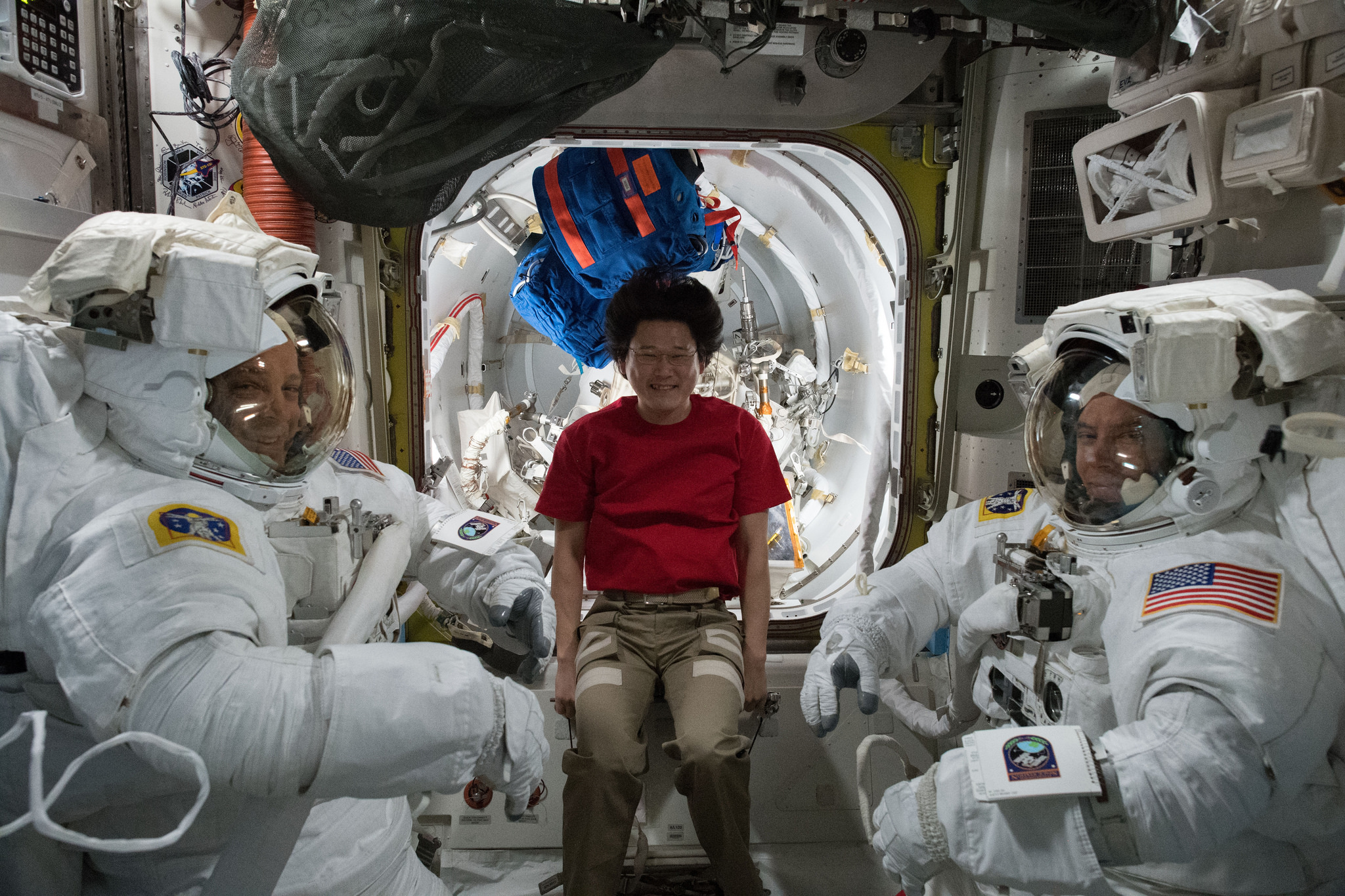
NASA astronauts Ricky Arnold, left, and Drew Feustel, right, of the Expedition 55 crew, finish securing their U.S. spacesuits for a fit check verification ahead of a May 16 spacewalk performed outside the International Space Station. Norishige Kanai, center, from the Japan Aerospace Exploration Agency, assisted them in and out of the spacesuits during the sizing process. Feustel and Arnold completed the fifth spacewalk of the year on May 16 at 1:10 p.m. CDT, lasting 6 hours, 31 minutes. The astronauts moved the Pump Flow Control Subassembly from a spare parts platform on the station’s truss to the Dextre robotic arm. The Pump Flow Control Subassembly drives and controls the flow of ammonia through the exterior portions of the station’s cooling system. They then removed and replaced a camera group along with a degraded Space to Ground Transmitter Receiver Controller. Feustel and Arnold also completed several get-ahead tasks. (NASA)
Middle School Students from Tennessee to Launch CubeSat Into Space
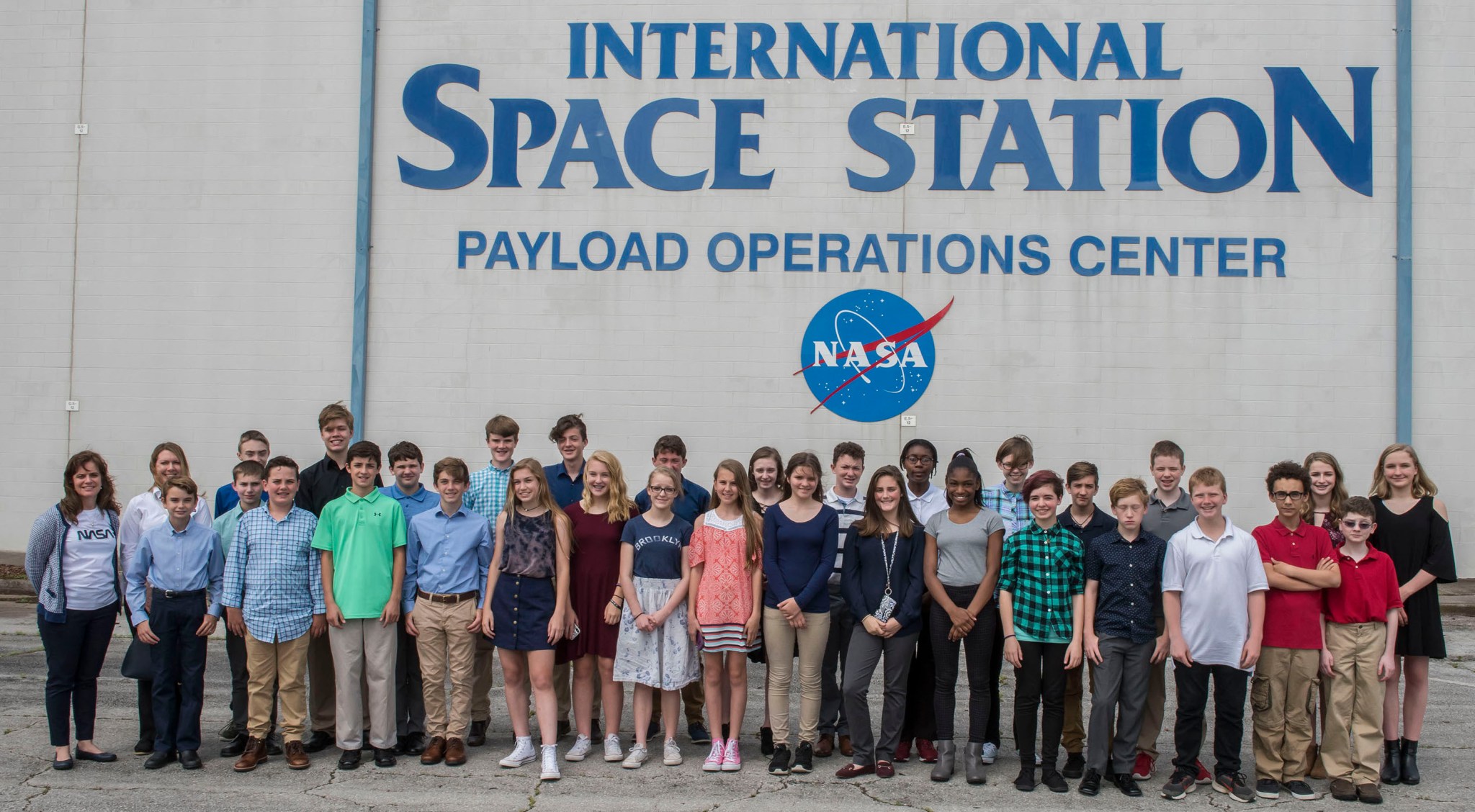
Students from the NASA Project-Based Learning class at Robertsville Middle School in Oak Ridge, Tennessee, visited NASA’s Marshall Space Flight Center on May 18. They toured the Payload Operations Integration Center and the additive manufacturing facility in Building 4707. Marshall staff assisted the Oak Ridge City School System with curriculum development of an engineering elective that incorporates unique NASA resources. Marshall team members also trained teachers to use the curriculum. (NASA/Fred Deaton)
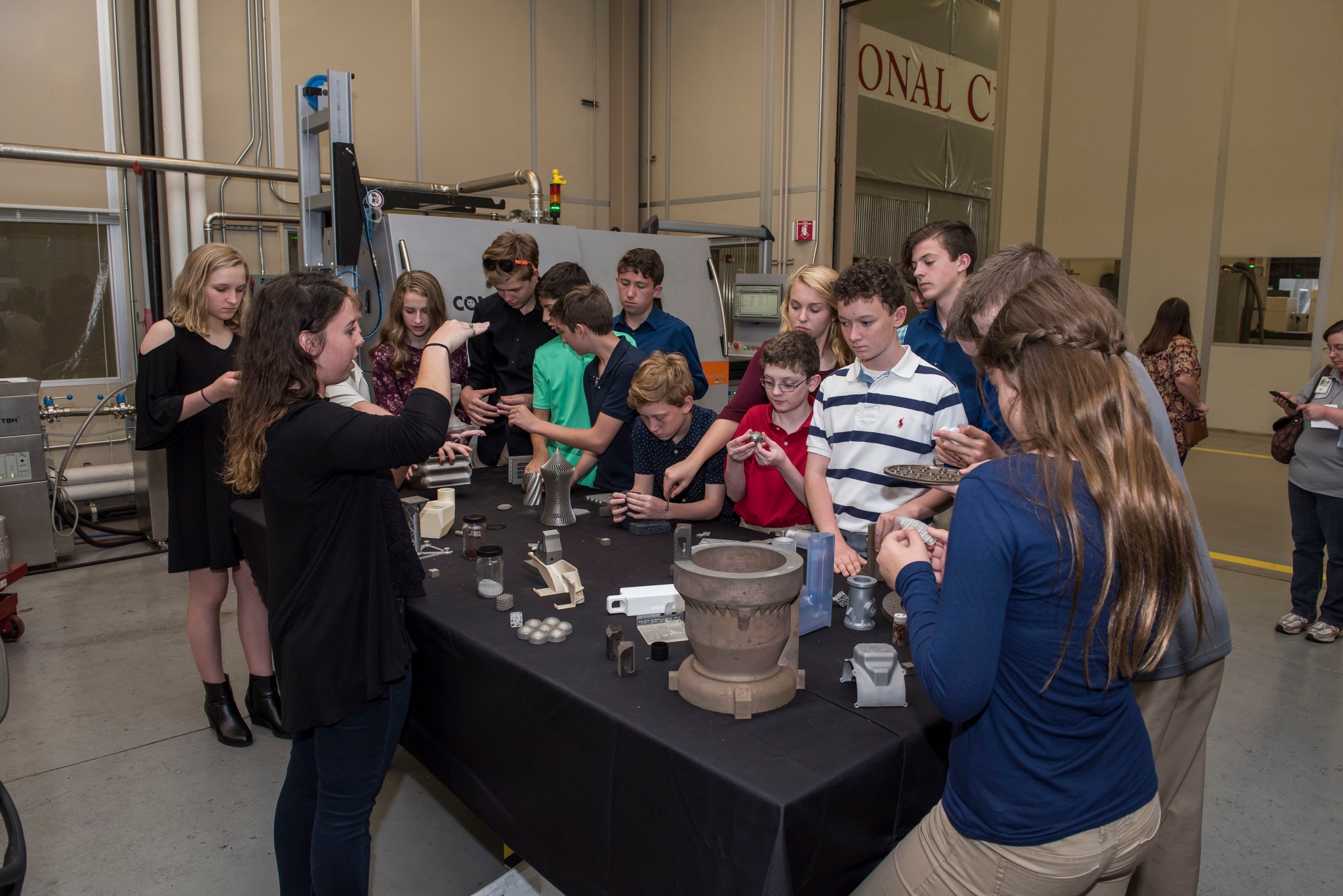
Susan Barber, a NASA Pathways intern in Marshall’s Engineering Directorate, speaks to Robertsville Middle School students during their tour of Marshall’s additive manufacturing facility. The students are a part of an engineering elective class where they are learning to use additive manufacturing to build a small satellite. Their project, RAMSat, a small satellite designed to study regrowth patterns after wildfires, was accepted by NASA’s CubeSat Launch Initiative, a program designed to provide access to space for CubeSats developed by NASA centers, accredited educational institutions and non-profit organizations. They will have the opportunity to build a functioning satellite and launch it into space as early as 2020. (NASA/Fred Deaton)
Marshall Shows Off New Testing Facility for the International Space Station
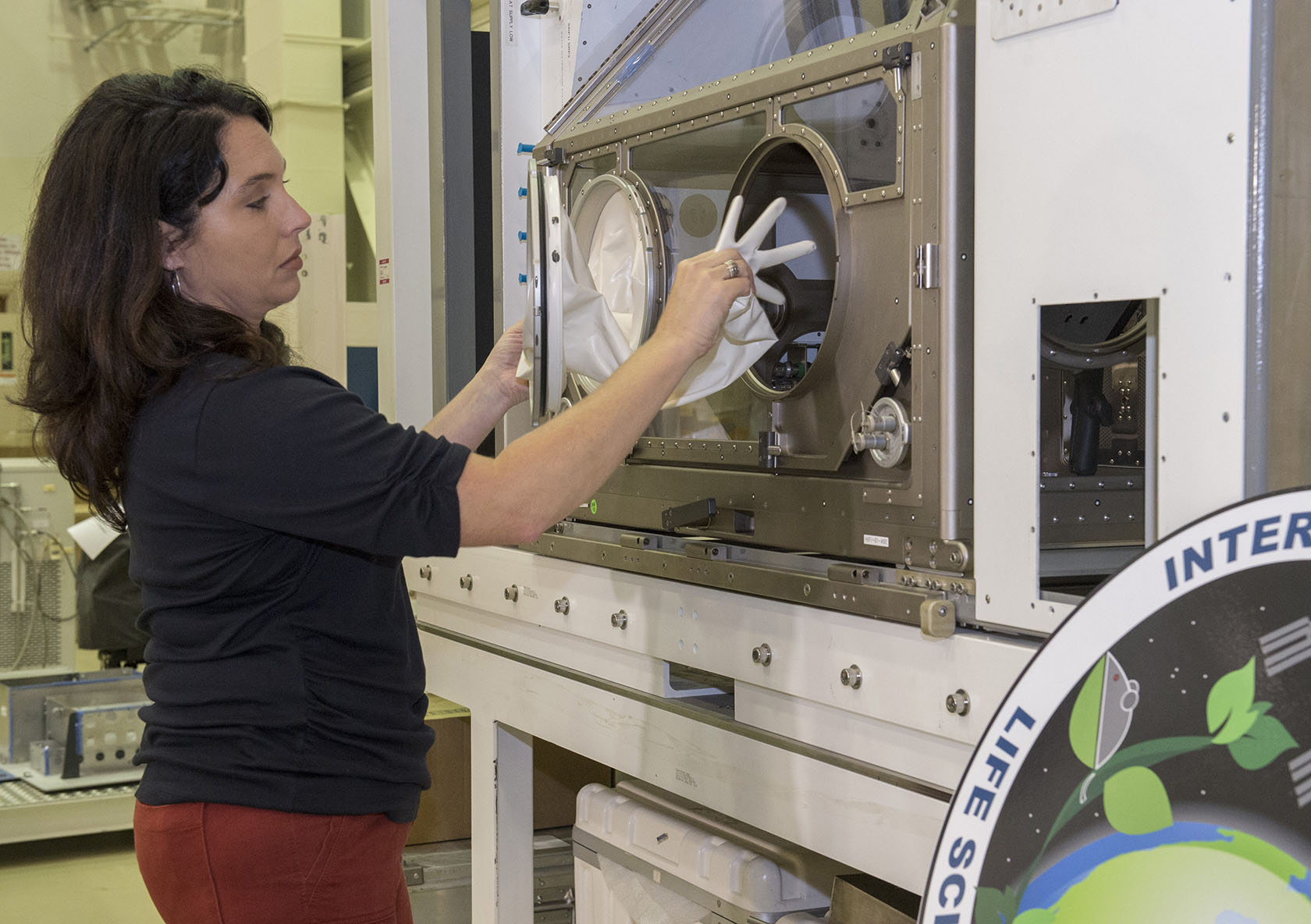
NASA Marshall Space Flight Center’s Christy Gattis, chief engineer for the Life Sciences Glovebox, demonstrates how the gloves are attached to the LSG, the agency’s newest testing facility for the International Space Station. Engineers at Marshall introduced the glovebox to members of the media May 16 in the Space Station Integration and Testing Facility. The completed flight hardware was recently shipped to Japan, where it is scheduled to launch in September. The LSG is a sealed work area that accommodates life science and technology investigations in a “workbench” type environment. Due to its larger size design, two crew members can work in the LSG simultaneously. The facility boasts new features to help astronauts better conduct experiments such as a more fitted glove design, magnets to hold things in place while working and an iPad for referencing notes and procedures. (NASA/Emmett Given)
Marshall Shared Experiences Forum Features Glenn’s Anita Laing
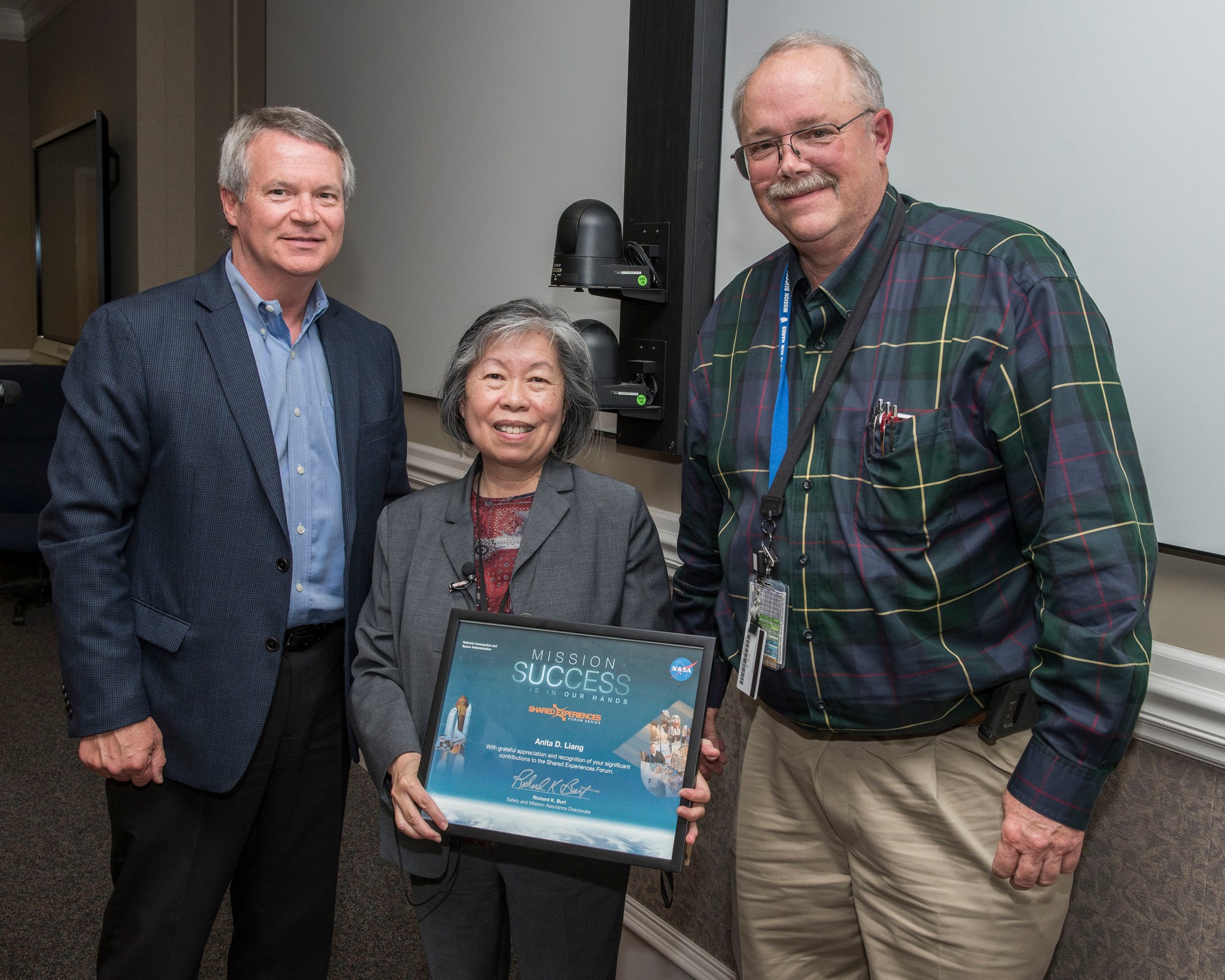
Anita Laing, director of Safety and Mission Assurance at NASA’s Glenn Research Center receives a certificate of appreciation and recognition from Rick Burt, right, director of the Safety and Mission Assurance Directorate at NASA’s Marshall Space Flight Center; and Randy Lycans, vice president of Jacobs Engineering. At the May 17 Shared Experiences Forum, Liang shared her insight on mission success from leading Glenn’s Operational Safety, Mission Assurance and Occupational Health efforts with Marshall team members. The Shared Experiences Forum is a part of Marshall’s Mission Success Is In Our Hands initiative to promote and strengthen Marshall’s focus on mission, hardware and crew safety at the center. The forums are designed to engage decision makers and other team members in conversation with trusted leaders who will share their personal insights on topics related to mission assurance, what they learned and what they might do differently. (NASA/Fred Deaton)
This Week in NASA History: The Saturn I SA-8 Mission Launches with Pegasus 2 – May 25, 1965
This week in 1965, the Saturn I SA-8 mission launched from NASA’s Kennedy Space Center. SA-8 delivered the second of three Pegasus micrometeoroid detection satellites into low-Earth orbit. The satellites, developed and managed by NASA’s Marshall Space Flight Center, electronically recorded the size and frequency of particles in space, and compared the performance of protected and unprotected solar cells. The satellites’ data informed future Apollo flights to the Moon. The NASA History Program is responsible for generating, disseminating and preserving NASA’s remarkable history and providing a comprehensive understanding of the institutional, cultural, social, political, economic, technological and scientific aspects of NASA’s activities in aeronautics and space. For more pictures like this one and to connect to NASA’s history, visit the Marshall History Program’s webpage. (NASA)
Obituaries
William L. Shrader Sr., of Huntsville, died May 16. He retired from the Marshall Center in 1988 as an engineer. He is survived by his wife, Juliet C. Shrader.


